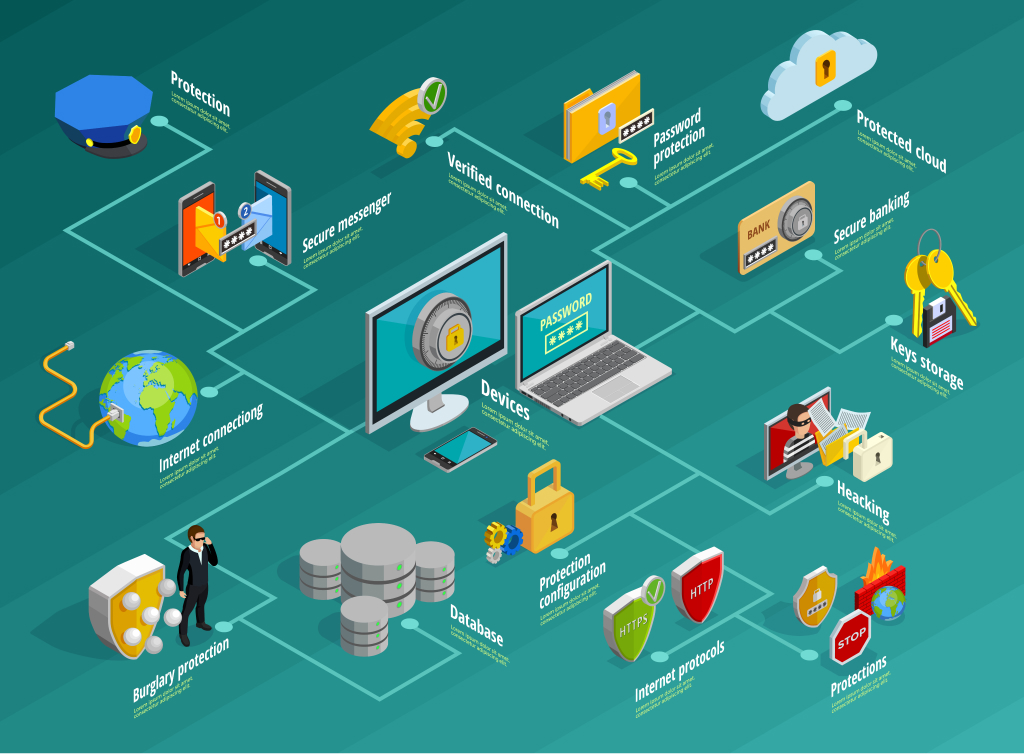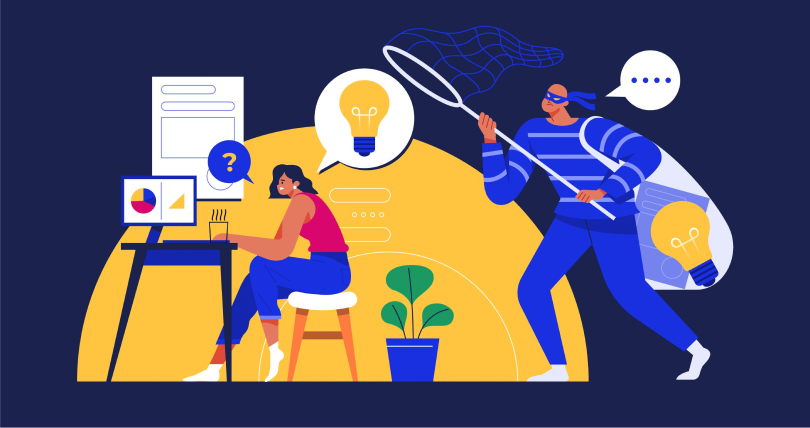
Understanding the Role of Firewalls in Enhancing Information Security
Definition of a Firewall
A firewall is a specialized security solution designed to act as a shield between a secured, internal network and untrusted external networks such as the internet. A set of defined rules govern what kind of traffic is allowed and forbidden, making it a critical component in network security, especially in controlling incoming and outgoing traffic based on an organization's security policies. It is the unsung hero in the cyber realm, diligently working to filter out potentially harmful data transmissions and ensuring a secure digital environment.
Importance of Firewalls
In this modern era, where cyber-attacks have become commonplace, the importance of firewalls cannot be overstated. They form the first line of defense against a myriad of cyber threats, providing a barrier between secured and controlled in-house networks and external networks that could be infected with malicious entities seeking unauthorized access to sensitive information. Firewalls, with their intricate set of rules and restrictions, are pivotal in creating a robust security framework, thereby ensuring the continuity and integrity of business operations. They empower organizations to safeguard their critical assets from the pervasive threats lurking in the digital world.
The Evolution of Firewalls
Firewalls have experienced continuous evolution since their inception, adapting to meet the escalating demands of the ever-growing digital landscape. From simple packet filtering to sophisticated, multi-layered security solutions, firewalls have matured exponentially, responding to the escalating complexity and diversity of cyber threats. The evolution of firewalls reflects the dynamic changes in the cybersecurity landscape, marked by the perpetual race between cybersecurity innovations and the emergence of new, more sophisticated cyber threats.
Understanding Information Security
Definition and Importance
Information security is a multifaceted discipline focusing on the protection of information—whether in transit or at rest—from unauthorized access, disclosure, alteration, or destruction. It is the cornerstone of organizational security, pivotal for maintaining the confidentiality, integrity, and availability of sensitive information. The rising instances of data breaches and cyber-attacks have elevated the importance of information security, making it a top priority for organizations and individuals seeking to safeguard their sensitive data and personal information from malicious entities.
Information Security vs Cybersecurity
While information security is focused primarily on the protection of data, cybersecurity is a broader term that encompasses the protection of entire digital systems, including hardware, software, and data, from cyber-attacks. Information security is a subset of cybersecurity, which seeks to safeguard information assets against unauthorized access, disclosure, alteration, or destruction. The symbiotic relationship between information security and cybersecurity necessitates a harmonized approach to combating cyber threats effectively, employing a myriad of security measures and strategies to ensure the holistic protection of digital assets.
Components of Information Security
Information security is composed of various components, each playing a crucial role in safeguarding information. Data protection and access control are pivotal in ensuring that sensitive information is shielded from unauthorized access and potential breaches. Other components like security policies, risk management, and incident response are equally vital, forming a cohesive and comprehensive information security framework that is capable of responding to and mitigating a diverse array of cyber threats.

How Firewalls Work
Functionality of Firewalls
Firewalls function as the gatekeepers of network security, meticulously analyzing and filtering the incoming and outgoing traffic based on predefined security rules. They operate by inspecting data packets transmitted between different networks and either allowing them or blocking them based on the security policies in place. This intricate process of scrutiny ensures that only legitimate traffic is permitted, effectively protecting the network from unauthorized access and potential cyber-attacks.
Types of Firewalls
Firewalls have diversified into various types to cater to the evolving needs of network security. Packet-filtering firewalls, the most basic type, analyze packets and allow or block them based on the established rules. Stateful inspection firewalls, on the other hand, examine the state and properties of packets, ensuring a more thorough analysis. Proxy firewalls serve as intermediaries, forwarding requests from one network to another, and thus, preventing direct contact between them. Each type of firewall offers unique advantages and levels of security, allowing organizations to choose the most suitable one based on their specific needs and network configurations.
Firewall Configuration and Management
Proper configuration and management of firewalls are crucial for maximizing their effectiveness in securing network environments. This involves defining clear and concise security policies, regularly updating firewall rules to adapt to the changing threat landscape, and monitoring firewall logs to detect and respond to any suspicious activities promptly. Effective firewall management also entails periodic reviews and audits to ensure the optimal performance of the firewall and to identify and rectify any vulnerabilities or weaknesses in the security framework.
The Role of Firewalls in Network Security
Intrusion Prevention and Detection
Firewalls are the bulwarks of network security, serving as proactive agents in intrusion prevention and detection. They scrutinize network traffic and utilize predefined rules to identify and neutralize potential threats, acting as the initial barrier against unauthorized intrusions and malicious entities. Their role is pivotal in maintaining the sanctity of the network and ensuring that only legitimate, benign traffic can access the network. By meticulously analyzing data packets and their attributes, firewalls can discern between normal and suspicious traffic, enabling them to block harmful data transmissions and thwart cyber-attacks before they can penetrate the network and inflict damage.
VPN and Network Protection
The integration of firewalls with VPNs (Virtual Private Networks) propels network protection to new heights. VPNs encrypt internet traffic, creating secure tunnels for data transmission over the internet, while firewalls monitor and filter this traffic, enhancing the security of the connection. This collaborative synergy provides a fortified layer of protection, ensuring the confidentiality and integrity of the data being transmitted between networks. In today’s world, where remote working and online collaborations are prevalent, the combination of firewalls and VPNs is essential for securing connections and safeguarding sensitive information from potential eavesdroppers and malicious attackers.
Threat Prevention
Firewalls play a crucial role in securing networks from a myriad of cyber threats such as malware, ransomware, and phishing attacks. They employ advanced threat detection mechanisms to identify and block malicious content and unauthorized access, thereby preventing potential data breaches and information theft. By enforcing stringent security policies and utilizing real-time threat intelligence, firewalls can proactively mitigate risks and protect organizational assets from the multitude of cyber threats prevalent in the digital ecosystem.

Beyond Firewalls: Comprehensive Security Solutions
Security Software
In addition to firewalls, a myriad of security software and solutions are available, working in concert to provide holistic protection against cyber threats. Antivirus software, anti-malware tools, and intrusion detection and prevention systems (IDPS) are integral components of a comprehensive security strategy, each contributing to the overall resilience and robustness of the security infrastructure. These security solutions operate on various levels of the IT environment, detecting and neutralizing threats, and safeguarding critical assets from potential compromises.
Security Policies and Best Practices
Security policies and best practices form the backbone of any effective security strategy. They outline the procedures, guidelines, and standards to be followed to ensure the secure handling and protection of information. Implementing and adhering to robust security policies is as crucial as deploying advanced technological solutions. It requires the commitment and cooperation of every individual within an organization to cultivate a secure and vigilant environment. Educating employees about the importance of information security and training them to follow best practices can significantly reduce the risk of security breaches and foster a culture of security awareness and responsibility.
The Importance of Regular Updates and Patch Management
Regular updates and effective patch management are critical for maintaining the security integrity of firewalls and other security solutions. Updates often include fixes for vulnerabilities and enhancements to counter new threats, ensuring that security solutions are equipped to defend against the ever-evolving cyber threat landscape. Failing to update and patch security software can leave systems exposed to exploits and attacks, rendering even the most sophisticated security solutions ineffective. A diligent approach to updates and patches is fundamental in fortifying the security infrastructure and ensuring the sustained protection of digital assets against emerging threats.
Case Studies
Successful Use of Firewalls
Diving into real-world instances illuminates the pivotal role firewalls play in averting cyber threats and securing digital ecosystems. Numerous cases demonstrate how, by enforcing stringent security policies and utilizing advanced threat detection mechanisms, firewalls have successfully mitigated potential data breaches and unauthorized access to sensitive information. These case studies offer valuable insights into the efficacy of firewalls in diverse scenarios, showcasing their adaptability and resilience in confronting varied cyber threats. By studying these successful implementations, organizations can glean practical knowledge and strategies to optimize their firewall deployments and enhance their security postures.
Instances of Firewall Failures
Analyzing instances of firewall failures is equally crucial for understanding the vulnerabilities and limitations inherent in these security solutions. Several cases expose the gaps and weaknesses in firewall configurations and policies that have been exploited by cybercriminals to infiltrate networks and access confidential information. Scrutinizing these failures provides invaluable lessons on the importance of continuous improvement, adaptation, and vigilance in maintaining robust security frameworks. Learning from these shortcomings can guide organizations in fortifying their firewalls and preemptively addressing vulnerabilities to bolster their defenses against evolving cyber threats.

Conclusion
Summary of Firewall’s Role
In conclusion, firewalls are the linchpins of information and network security, acting as vigilant guardians protecting digital assets from unauthorized access and cyber threats. They serve as the initial barrier against malicious entities, meticulously analyzing and filtering network traffic to ensure the security and integrity of the digital environment. Their multifaceted roles in intrusion detection, threat prevention, and securing connections highlight their indispensability in constructing a resilient and secure cyber infrastructure.
Future of Firewalls and Information Security
Looking forward, the trajectory of firewalls and information security is set to be marked by continuous innovation and advancement to counter the escalating sophistication of cyber threats. The convergence of emerging technologies like artificial intelligence and machine learning with firewall solutions is poised to revolutionize the way firewalls detect and respond to threats, enhancing their capability to predict and neutralize threats proactively. The evolving landscape of information security promises the development of more robust, intelligent, and adaptive firewalls, capable of defending against the multifarious and ever-evolving threats in the cyber realm.
Final Thoughts
The central role of firewalls in safeguarding digital domains underscores the imperative for organizations and individuals to remain informed and proactive in their approach to information security. The relentless evolution of cyber threats necessitates ongoing learning, adaptation, and enhancement of security measures to stay ahead of potential risks. The symbiotic relationship between advanced firewall solutions, robust security policies, and a vigilant, security-aware culture is the cornerstone for fostering a secure and resilient digital world.
References
- Cisco
- Introduction to Firewalls
- A comprehensive overview of firewalls, their types, and their significance in network security.
- URL: https://www.cisco.com/c/en/us/products/security/firewalls/what-is-a-firewall.html
- National Institute of Standards and Technology (NIST)
- Guidelines on Firewalls and Firewall Policy
- A detailed guide on firewalls, their configuration, and best practices, published by the U.S. Department of Commerce.
- URL: https://nvlpubs.nist.gov/nistpubs/Legacy/SP/nistspecialpublication800-41r1.pdf
- SANS Institute
- Firewalls and VPNs
- An in-depth analysis of firewalls in conjunction with VPNs, offering insights into their collaborative role in network security.
- URL: https://www.sans.org/reading-room/whitepapers/firewalls/paper/956
 Mark Petrenko
Mark Petrenko 
